Once we look back at England’s historical past, there will always be a castle as well as a tale, and besides how many of you have wanted to know just what oldest castles in England seems to be?
Table of Contents
Do you know about world’s oldest castles?
There are lots of world’s oldest castles such as Prague Castle, Killyleagh Castle, Alcázar of Segovia, Rochester Castle, Hohensalzburg Castle, Warwick Castle, Berkhamsted Castle, Bamburgh Castle, Rochester Castle and Windsor Castle. Let’s learn about some of these world’s oldest castles in England to your attention.
1. Berkhamsted Castle, the Oldest Castle in England
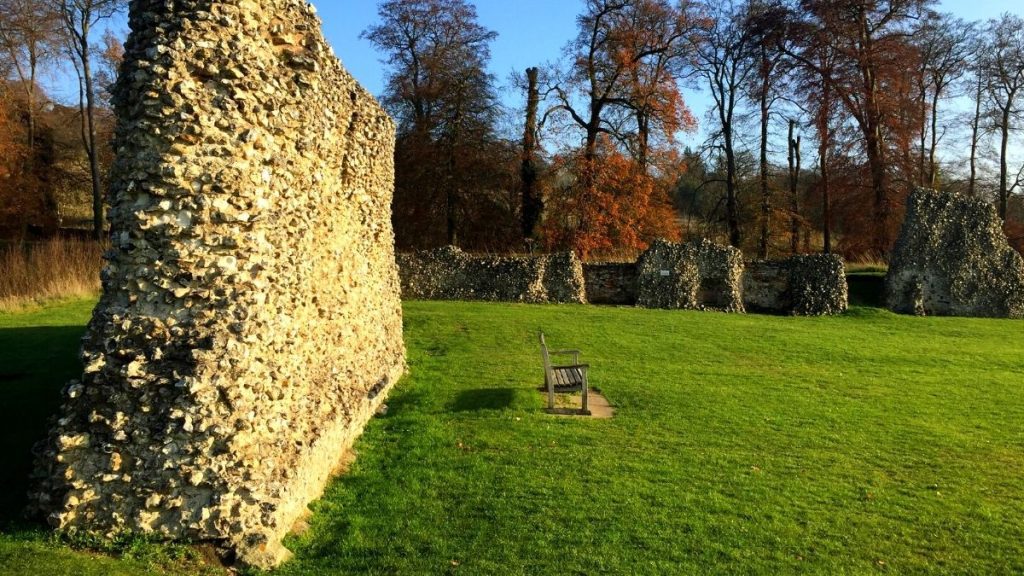
Berkhamsted Palace, constructed throughout 1066 by Robert of Mortain, William the Conqueror’s half-brother, seems to be one of the oldest castles in England. Even during Norman Conquest of England, a beginning Norman Oldest Castle in England Structure was built to regulate the crucial pathway among both London as well as the Midlands. But nevertheless, there have been even oldest castles in England aged made of wood fortresses with defensive functions in England dating all the way back towards the Iron Age; let’s all learn further about them.
Architectural Marvels
Berkhamsted Castle’s architectural prowess mirrors the ingenuity of medieval craftsmanship, with two distinctive features that have withstood the test of time: the Motte-and-Bailey design and the formidable Stone Keep construction.
1. Motte-and-Bailey Design:
At the heart of Berkhamsted Castle’s architectural narrative lies the ingenious Motte-and-Bailey design. This strategic layout, a hallmark of Norman military architecture, comprises a raised earthwork (the motte) crowned with a wooden tower, overlooking an enclosed courtyard (the bailey). The motte served as a vantage point, offering unparalleled views of the surroundings, while the bailey housed ancillary structures and provided a hub for daily activities.
This design not only served military functions but also reflected the socio-political landscape of medieval England. Berkhamsted, with its Motte-and-Bailey structure, stood as a testament to the Norman Conquest and the establishment of dominance in the aftermath of 1066.
2. Stone Keep Construction:
As the medieval era progressed, the Motte-and-Bailey design gave way to more sophisticated fortifications. Berkhamsted Castle, in the 12th century, witnessed a transformative evolution with the introduction of Stone Keep construction.
The Stone Keep, a formidable stone tower, replaced the earlier wooden structures atop the motte. This architectural upgrade enhanced the castle’s defensive capabilities, providing a sturdier defense against external threats. The transition from wood to stone not only symbolized technological advancements but also underscored the enduring significance of Berkhamsted Castle as a strategic stronghold.
The Stone Keep’s imposing presence not only served a practical purpose but also reflected the socio-political and cultural changes of the time. Berkhamsted’s Stone Keep became a symbol of power and permanence, leaving an indelible mark on the landscape of medieval England.
2. Maiden Castle in Dorset 600 BC
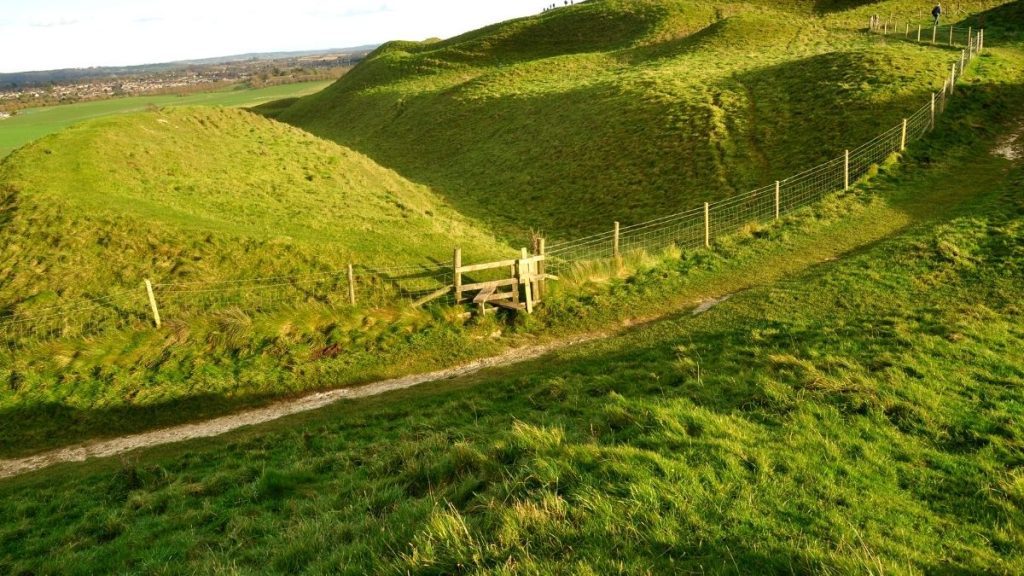
This is not really a middle Ages “Motte and Bailey Castle,” because we will primarily discuss in just this article. Maiden Castle has been another castle in England, constructed round the 600BC as well as occupies a total area of 16 acres, roughly comparable to most of the other mountain castles in Britain. Subsequently, around 450 BC, they decided to expand the castle, currently the largest mountain castle in Britain.
Following the Roman conquest of Britain, the very last residents decided to abandon the Maiden Castle, which was later used to use for agriculture activities. Maiden Castle was built just next to Dorchester DT2 9EY and therefore is open to the general public throughout the year with free entry. It really is managed by English Heritage.
Architectural Features and Layout
Maiden Castle’s layout is a masterpiece of ancient engineering. The concentric rings of earthworks and ditches showcase a meticulous design, suggesting strategic planning and defense mechanisms. As we traverse its expansive grounds in our mind’s eye, we marvel at the ingenuity that shaped its formidable architecture.
3. Bamburgh Castle 420
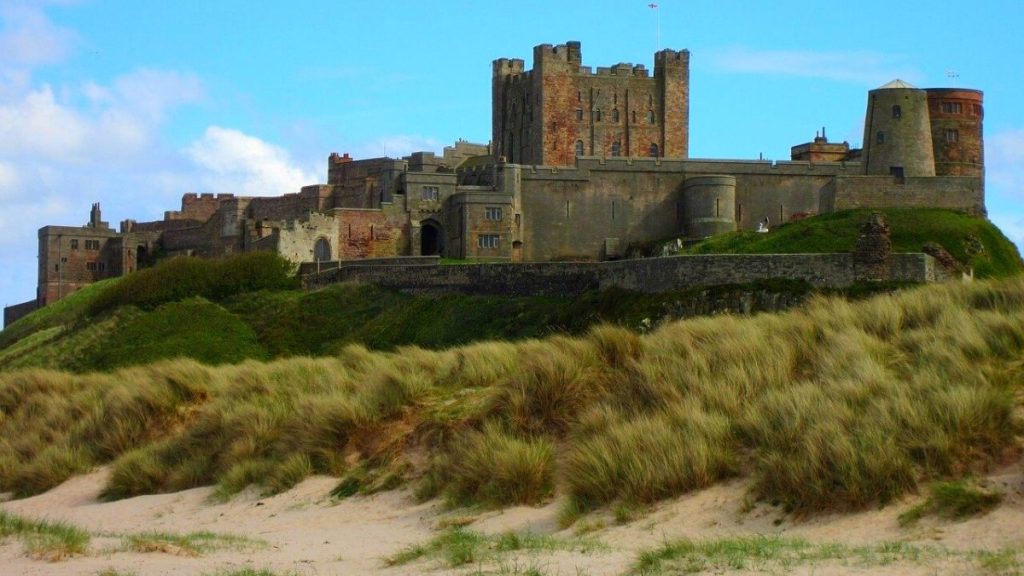
A whole other magnificent castle with a back-story that predates William’s conquering. Din Guarie seems to have been a Celtic Brythonic fortress establishment that served as that of the resources of the Kingdom of Bernicia from 420 to 547. Ever since, the castle has indeed been managed to pass upwards of three times by Britons as well as Anglo-Saxons, and that has been completely obliterated by Vikings 993.
Throughout 1095, William the Conqueror reconstructed a brand spanking new palace, which already serves as that of the center of the current court. William recognized the crucial implications of Bamburgh Castle as well as managed to make and one of the most powerful boundary garrisons with Scotland. Bamburgh Castle has housed several more kings over through the hundreds of years, including John, Henry III, Edward I, Edward II, as well as Edward III.
During most of the Wars of the Roses, Bamburgh Castle was the first one in England to really be severely damaged by advanced artillery. William Armstrong acquired the fort in 1894 for £60,000, and then it remains in the Armstrong family to this very day.
Architectural Grandeur
The sheer magnificence of Bamburgh Castle lies not just in its historical significance but also in its architectural prowess. Strategically perched on a craggy outcrop, the castle boasts impressive features that served both practical and aesthetic purposes. From towering walls to strategically positioned turrets, every element of its design tells a story of resilience and strategic brilliance.
4. Warwick Castle 1068
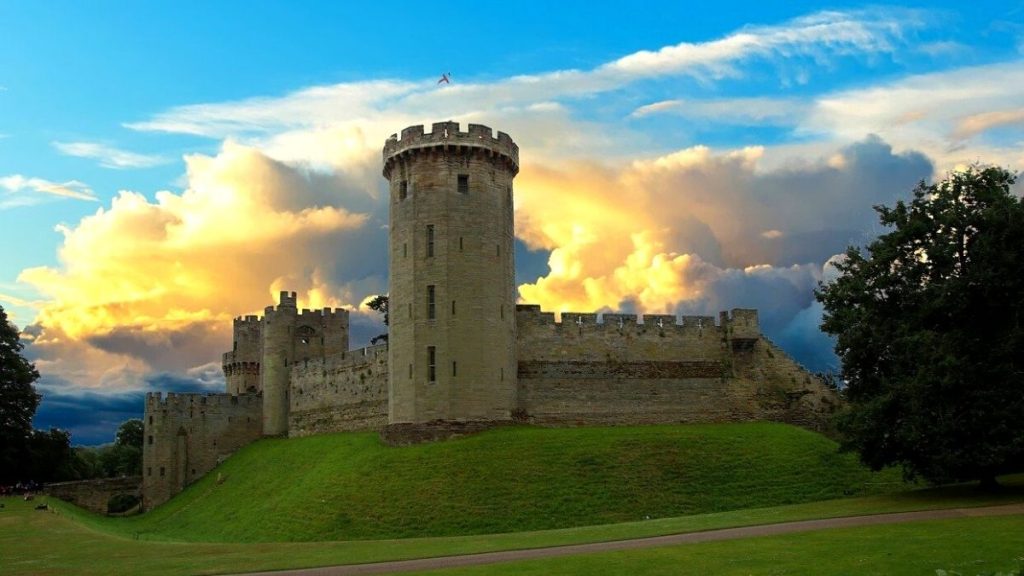
William the Conqueror constructed a whole other early made of wood motte-and-bailey palace in 1068. Warwick was being used as a fortress by kings until about the seventeenth century, because once King James I awarded the Castle to Fulke Greville. Greville decided to convert the castle into something like a country house, where he and his family owned till around 1978. Greville’s family sold the palace to that of the Tussauds Group throughout 1978.
Architectural Marvels
As we delve into Warwick Castle’s architectural intricacies, a sense of awe envelops us. The curtain walls, towers, and ramparts stand as silent sentinels, preserving the secrets of centuries. The Great Hall, with its high ceilings and medieval tapestries, exudes a timeless elegance. The Caesar’s Tower, a mighty structure that commands attention, offers panoramic views of the surrounding countryside.
The architectural brilliance extends beyond defensive structures. The interiors of Warwick Castle reveal a blend of medieval and Victorian opulence. The State Rooms, adorned with lavish furnishings and intricate decorations, provide a glimpse into the lives of the nobility who called this castle home. The marriage of function and aesthetics in Warwick Castle exemplifies the architectural prowess of its builders.
Would it be worthwhile to go to Warwick Castle?
The Warwick Palace seems to be good enough to justify seeing because of its genuine interior and exterior architectural style, entertainment, distinctive Barracks-style lodging, as well as the world’s largest having to work trebuchets.
How many activities are available at Warwick Castle?
Warwick Castle which has become the next one of the oldest castles in England and also a favorite family outing palaces, as well as the quantity of enjoyment it would have to give might very well undoubtedly amaze you. Because it is such a large castle, you could really spend an entire day strolling all around palace, inside the courtyard, as well as enjoying the castle’s tours but also historical background.
If you already have enough time, you could indeed hire boats but also appreciate the breathtaking view of the palace from of the River Avon. Warwick does have a dungeon, knight village lodging on which you can spend the night, breakfast, but also evening tea throughout the observatory. The castle’s existing owners fought hard to keep visitors for about as long as humanly possible. Feel free to visit their website for more details, or even we wholeheartedly suggest that you bring literally the entire family.
5. Windsor Castle 1070
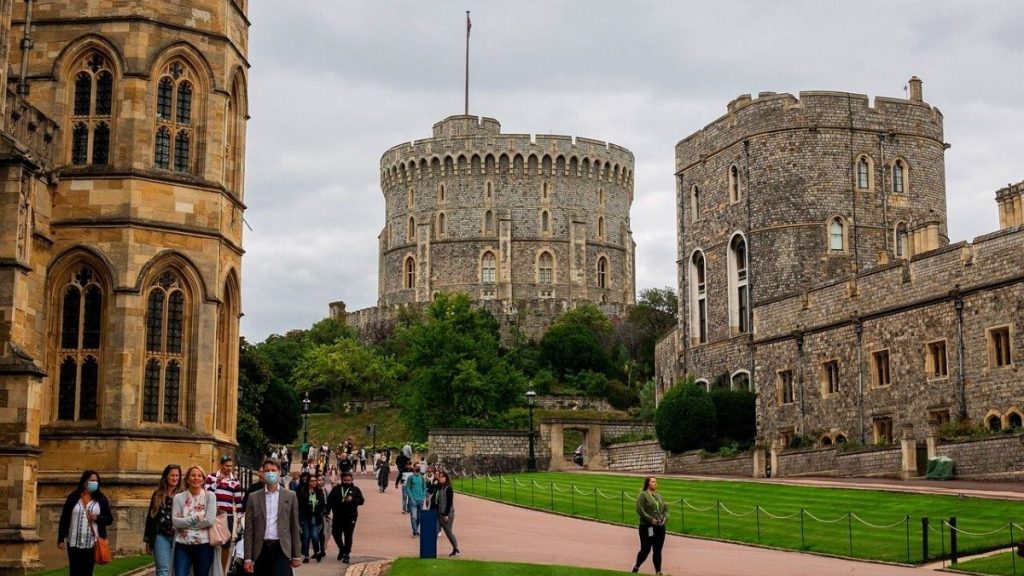
Windsor is the castle where most of tourists are interesting as well as Windsor castle has been another one of the oldest castles in England, with 39 monarchs having lived there ever since William the Conqueror constructed a castle. Also presently, it really is the main home of England’s royal family, as well as the world’s longest-occupied castle.
This one was originally constructed as a timber motte-and-bailey Norman redoubt upon that outskirt of London to strengthen their existence as well as defend against unforeseen attacks. The castle, progressively supplanted by a stone building, withstood siege during in the Baron’s War just at beginning of the 13th century. Afterwards until Queen Victoria’s ruler, Windsor Castle was subjected to numerous conflicts as well as restoration projects.
Including during WWII, the royal family have been using the castle as just a safe haven from the Luftwaffe’s bombing campaign. Windsor Castle is already one of the greatest visited palaces in the United Kingdom and a popular tourist attraction.
Related Article : How Far is Windsor Castle from Buckingham Palace?
Architectural Marvel: A Symphony of Styles
Windsor Castle’s architecture is a symphony of styles, seamlessly blending medieval fortifications with elegant state apartments. The Lower Ward boasts the iconic Round Tower, a medieval masterpiece that looms over the landscape. The Upper Ward, on the other hand, houses the State Apartments, which showcase opulent interiors and treasures collected over the centuries.
The meticulous craftsmanship evident in every stone of the castle is a testament to the skills of artisans who have contributed to its construction and renovation. The castle’s longevity is a credit to the architects and builders who carefully maintained its structural integrity while adapting it to the changing needs of the royal occupants.
6. Rochester Castle 1090
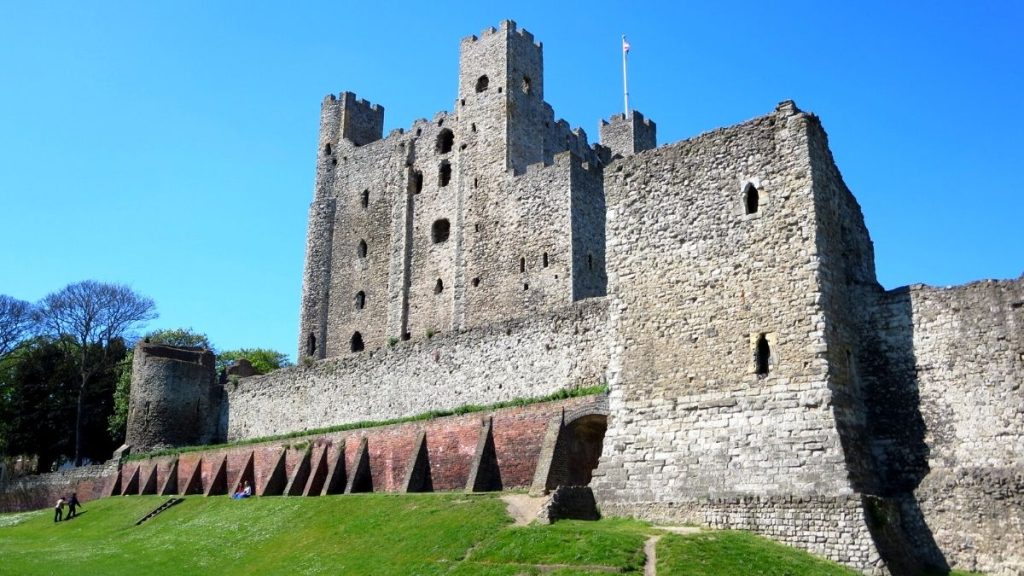
Rochester would be the next oldest castle in England, having been established during William’s conquering as well as offered to Bishop Odo. All through Rochester’s first military background, Bishop Odo did lose the palace to William Rufus. Rufus formed the suggests that the main of the palace when he built a brand new stone fort in Rochester among both 1087 as well as 1089.
Throughout the First Barons War, King John completely destroyed it, but also Prince Louis did not repair it. The castle was severely damaged for the third time in 1264, even during 2nd Barons War, when Simon de Montfort and Gilbert de Claire attempted and even though managed to catch the castle. Rochester Castle’s last military operation occurred in 1381, when this was managed to capture but also raided as during Peasants’ Revolt.
The castles as well as its park were officially opened in 1870 by the holders. Throughout the nineteenth and twentieth century’s, Rochester was subjected to repair work. The wrecks have been under the care of English Heritage and therefore are open to the general public.
Architectural Marvel
Rochester Castle is more than just a fortress; it is a masterpiece of medieval architecture. The stone walls that encircle it tell a story of meticulous design and ingenious defensive features. The square keep, a hallmark of Norman military architecture, stands as a formidable testament to the craftsmanship of its builders. The strategic placement of towers and battlements reveals a keen understanding of defensive tactics, making Rochester Castle a formidable stronghold.
What was the first castle in England?
The first castle in England is generally considered to be the Tower of London. The White Tower, the central core of the Tower of London, was initiated by William the Conqueror in the late 11th century as part of the Norman Conquest of England. Construction began around 1078, making it one of the earliest and most iconic castles in the country.
The Tower of London served not only as a fortress to secure William’s reign but also as a symbol of Norman power and authority in England. Over the centuries, the Tower of London expanded, with additional structures and fortifications added, solidifying its place in history as the first major castle in England.
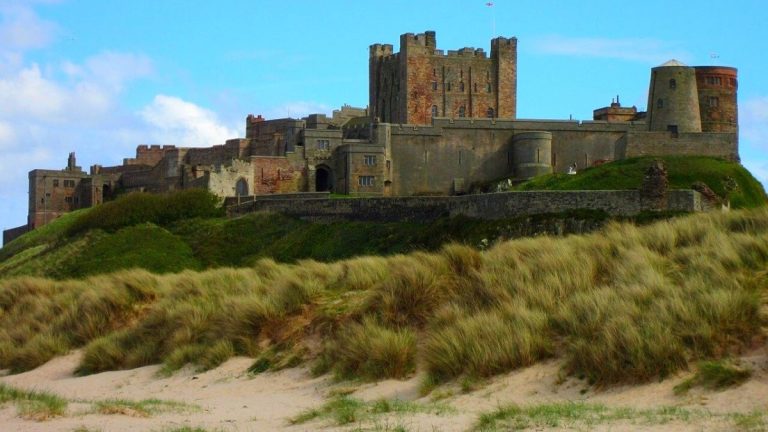



Leave a Reply